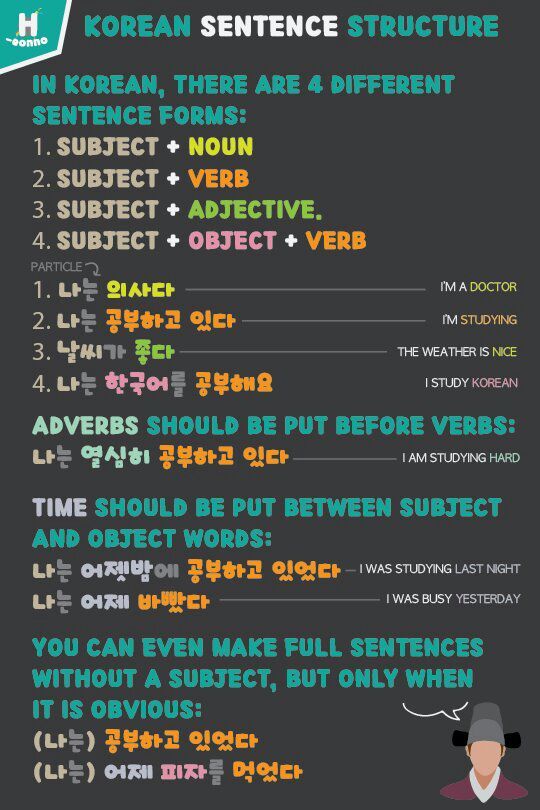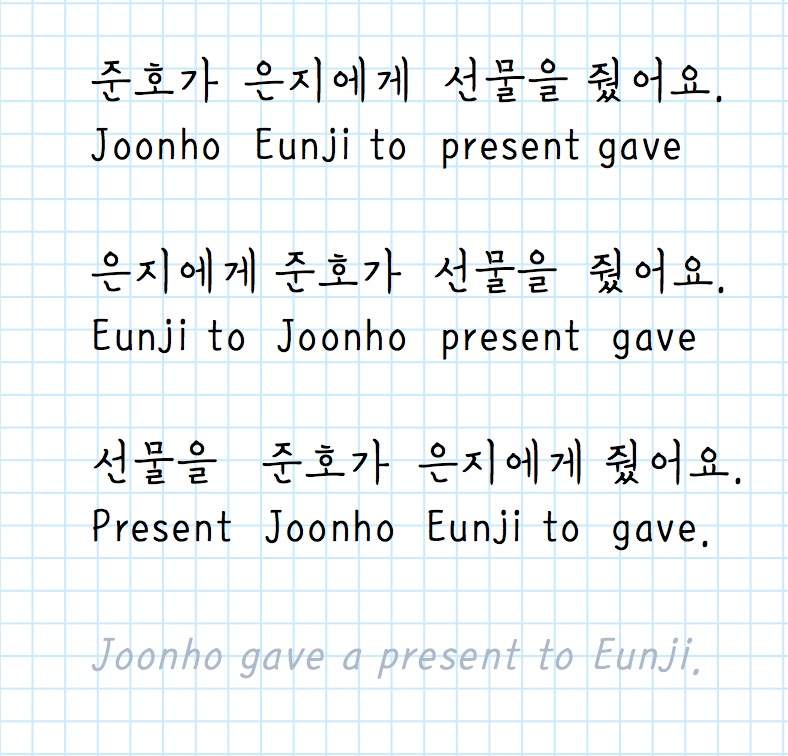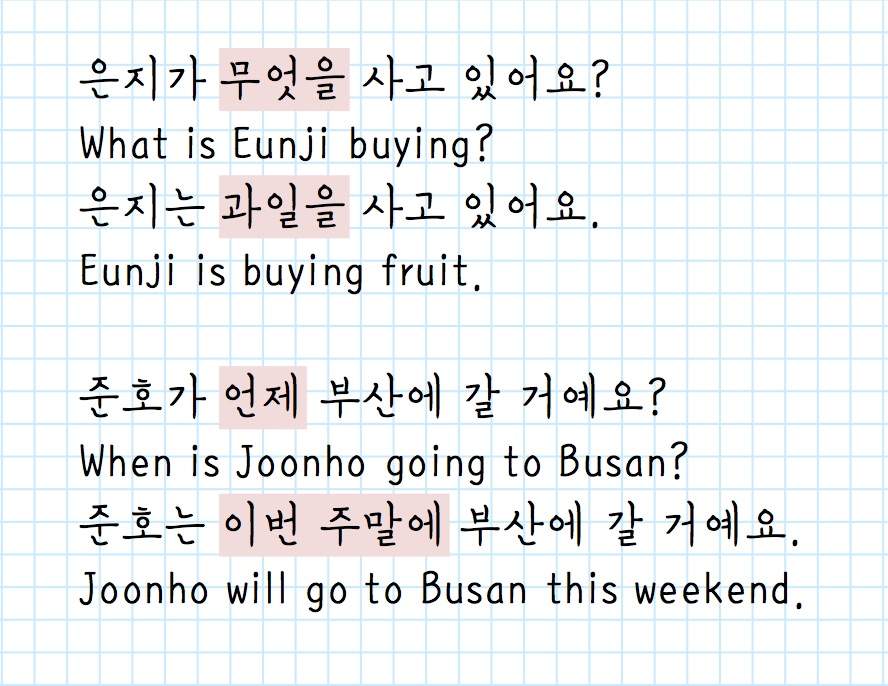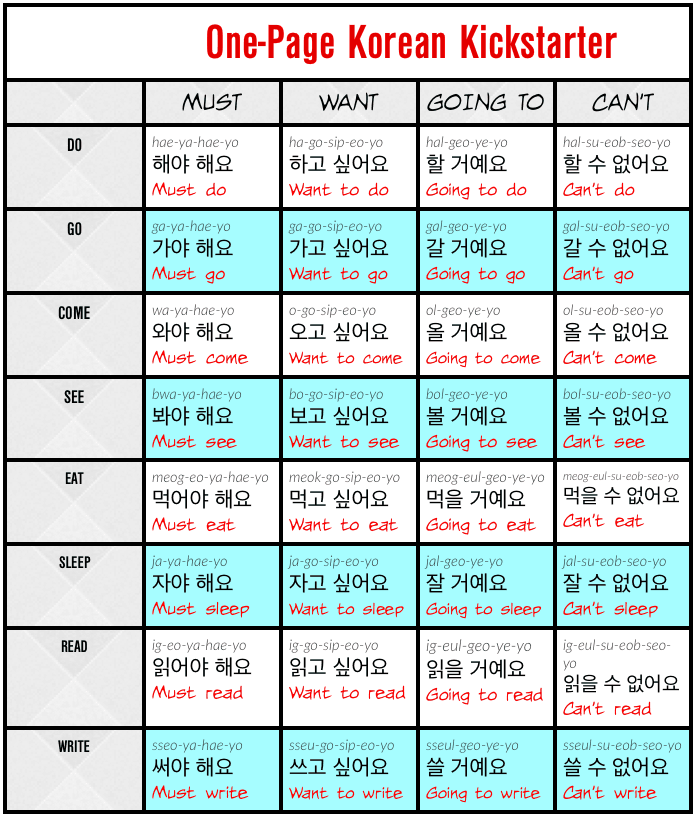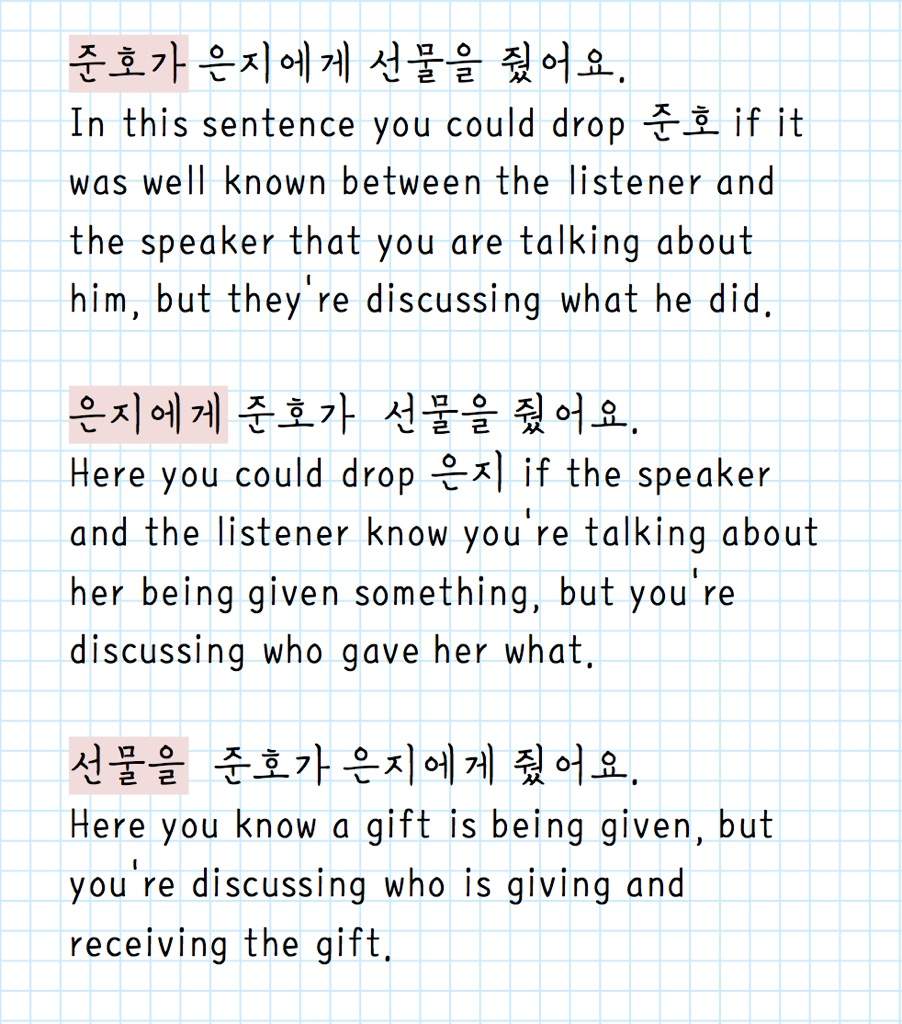How To Form Sentences In Korean
How To Form Sentences In Korean - Web korean sentences are made up of either a subject + verb or a subject + object + verb. 2.3 korean writing practice with syllable blocks. Figure out which vowel you are using. Web when you look at the korean sentence 사랑해 that translates into ‘i love you’, naturally one would expect it would make up of the three components: Web learn how to form korean sentences by understanding 3 elements: Korean pronouns aren’t usually needed. Web by the sentence ending ~ (스)ㅂ니다 , 아/어요 or 아/어. It is usually marked with a topic marker “은/는” or a subject marker “이/가” with the nouns as subjects to be specific. Web in this video lesson, we will teach you how to easily form korean sentences in korean! Korean sentence structure and english sentence structure are a little different.
Table of basic korean sentences using subject marker. Web different ways to say “sure” in korean. Korean words don’t have a gender. 🤔 in this class, you are going to learn how to form a sentence in korean in a fun and relaxing environment. Web ukraine's overnight drone strike on moscow has been compared to the 9/11 attacks by a russian official. Korean, japanese, and to some extent german, all use sov in. Conjugating a verb simply means putting an ending onto the verb. 2.3.2 writing words with two or more syllables. But obviously ‘i’ and ‘you’ are nowhere to be found. 2.3 korean writing practice with syllable blocks.
Web sentences are made up of words so you should be able to read and write korean words. As was described above, there are a few different ways to say “sure” in korean. Web let’s break the sentence down. Web hello everyone :) welcome to my channel this video is about how to form korean sentences and some key expressions that you will need on your first day in seoul ! It’s important to learn conjugation as you progress in learning korean. Subject + object + verb 수민이 영화를 봐요. Subject (s) + object (o) + verb (v). Web how are korean sentences structured? Korean verbs always come at the end of the sentence. 2.3 korean writing practice with syllable blocks.
Korean Sentence Structure Korean School Amino
Web when you look at the korean sentence 사랑해 that translates into ‘i love you’, naturally one would expect it would make up of the three components: Korean words don’t have a gender. In this sentence, 수민 is the subject and 가요 is the verb. Web in this video lesson, we will teach you how to easily form korean sentences.
Sentence structure Korean Language Amino
In these final 8 lessons of unit 1, you will be introduced to connecting particles in korean. Once you can conjugate a verb, you know how to make a korean sentence! You will also learn about using 잘/못 in sentences. We’ll practice how to apply it in your daily life too. Although it is simple, this process is one of.
Sentence structure Korean Language Amino
So these are the 4 most common and basic. Web hello everyone :) welcome to my channel this video is about how to form korean sentences and some key expressions that you will need on your first day in seoul ! Web by the sentence ending ~ (스)ㅂ니다 , 아/어요 or 아/어. Once you can conjugate a verb, you know.
Korean sentences 1 YouTube
:) i hope this will be useful. The easiest way to make korean sentences is by conjugating korean verbs. Web most important korean sentence structures. As was described above, there are a few different ways to say “sure” in korean. The base form is in korean is:
Learn the Korean Sentence Structure with this Simple Guide
Web korean conjugations in korean grammar determine the meaning, tense, tone, and mood of sentences. :) i hope this will be useful. For native speakers of languages that use the svo grammar structure, such as english, this may sound confusing and incorrect. The reason why is that one of the basic korean sentence structures is just a. Korean, japanese, and.
How to Form Korean Sentences ㅣ Basic Korean Lesson 01 YouTube
2.3 korean writing practice with syllable blocks. Let’s look at some examples: Subject (s) + object (o) + verb (v). We’ll practice how to apply it in your daily life too. But obviously ‘i’ and ‘you’ are nowhere to be found.
46 best images about Koreaaa on Pinterest Sentences in english
This is the best place to start learning the korean language! Web let’s break the sentence down. The following table will help you understand basic korean sentence structure easily. Web korean grammar’s order is different from english. In this sentence, 수민 is the subject and 가요 is the verb.
Korean Sentences with Negatives Korean words, Korean words learning
The reason why is that one of the basic korean sentence structures is just a. As was described above, there are a few different ways to say “sure” in korean. Korean, japanese, and to some extent german, all use sov in. Foreign ministry spokeswoman maria zakharova has said the methods used by kyiv are similar. Web let’s break the sentence.
MAking SIMPLE Korean Sentences Korean Language Amino in 2021 Korean
Determine whether your syllable ends with a vowel or a consonant. You will also learn about using 잘/못 in sentences. It’s important to learn conjugation as you progress in learning korean. The reason why is that one of the basic korean sentence structures is just a. 2.3.1 writing words with one syllable.
Sentence structure Korean Language Amino
Once you can conjugate a verb, you know how to make a korean sentence! Conjugating a verb simply means putting an ending onto the verb. It is absolutely compulsory for you to grasp the difference as soon as possible. That makes it obvious to not use formal polite speech style with your younger sibling or friends of your. Web sentences.
Web Sentences Are Made Up Of Words So You Should Be Able To Read And Write Korean Words.
Web when you look at the korean sentence 사랑해 that translates into ‘i love you’, naturally one would expect it would make up of the three components: I suggest you learn korean verbs, korean adjectives and korean phrases first. It is usually marked with a topic marker “은/는” or a subject marker “이/가” with the nouns as subjects to be specific. Korean sentence structure and english sentence structure are a little different.
🤔 In This Class, You Are Going To Learn How To Form A Sentence In Korean In A Fun And Relaxing Environment.
The easiest way to make korean sentences is by conjugating korean verbs. So these are the 4 most common and basic. 2.3 korean writing practice with syllable blocks. The base form is in korean is:
In This Sentence, 수민 Is The Subject And 가요 Is The Verb.
Eventually, you will learn hundreds of these particles, but here in these lessons, you will be introduced to the most basic ones (~고, ~고 싶다 and ~고 있다 to name a few). Web the subject in a korean sentence is written at the start of the sentence. Web how are korean sentences structured? Basic korean grammar, on the other hand, uses the order:
Web By The Sentence Ending ~ (스)ㅂ니다 , 아/어요 Or 아/어.
Conjugating a verb simply means putting an ending onto the verb. Korean verbs always come at the end of the sentence. 2.3.1 writing words with one syllable. For example, let’s say you’re going to use the verb “go” in a sentence.
